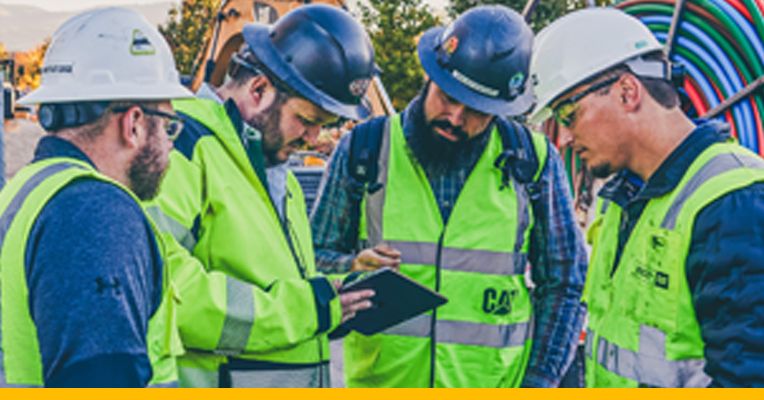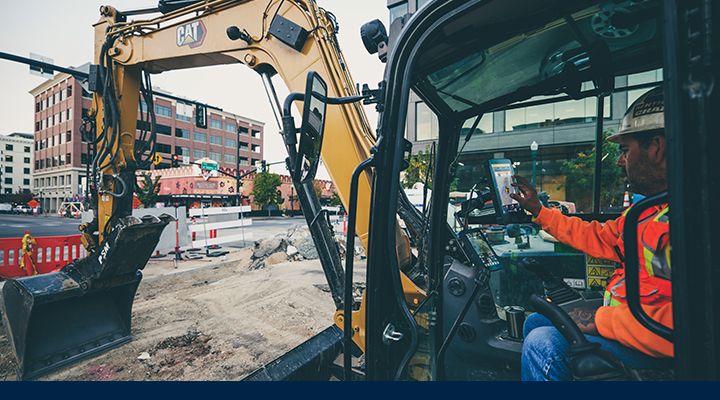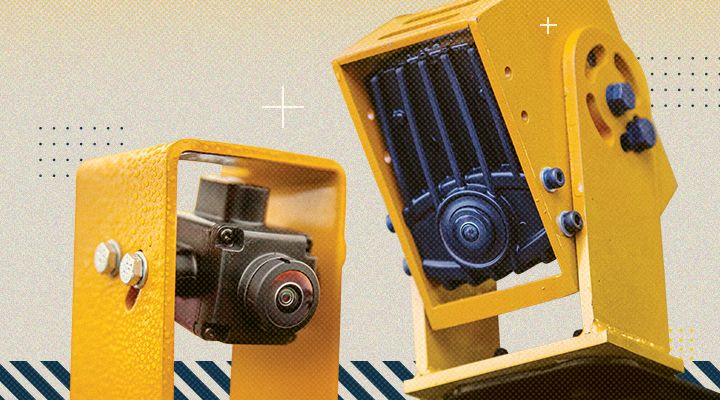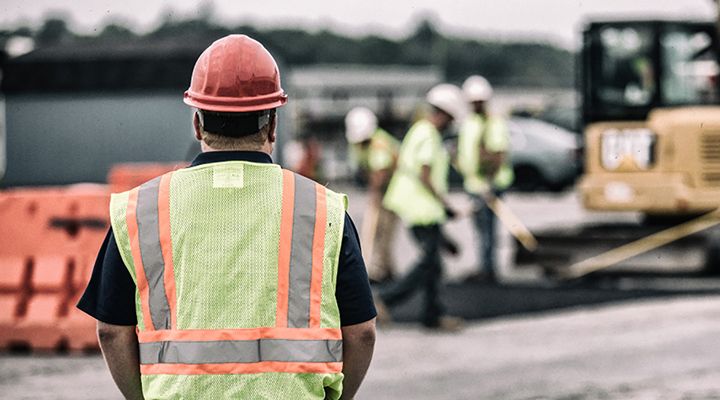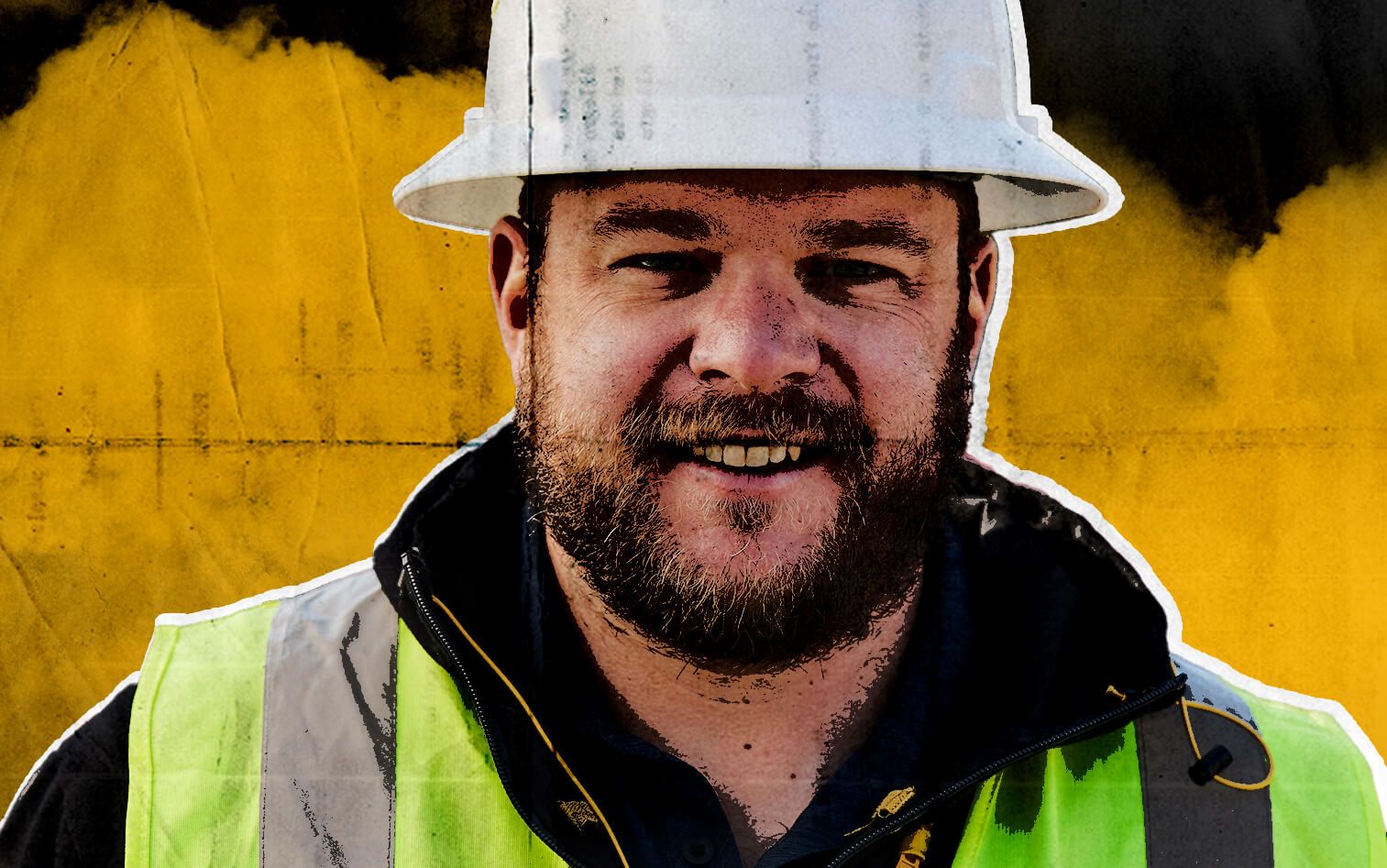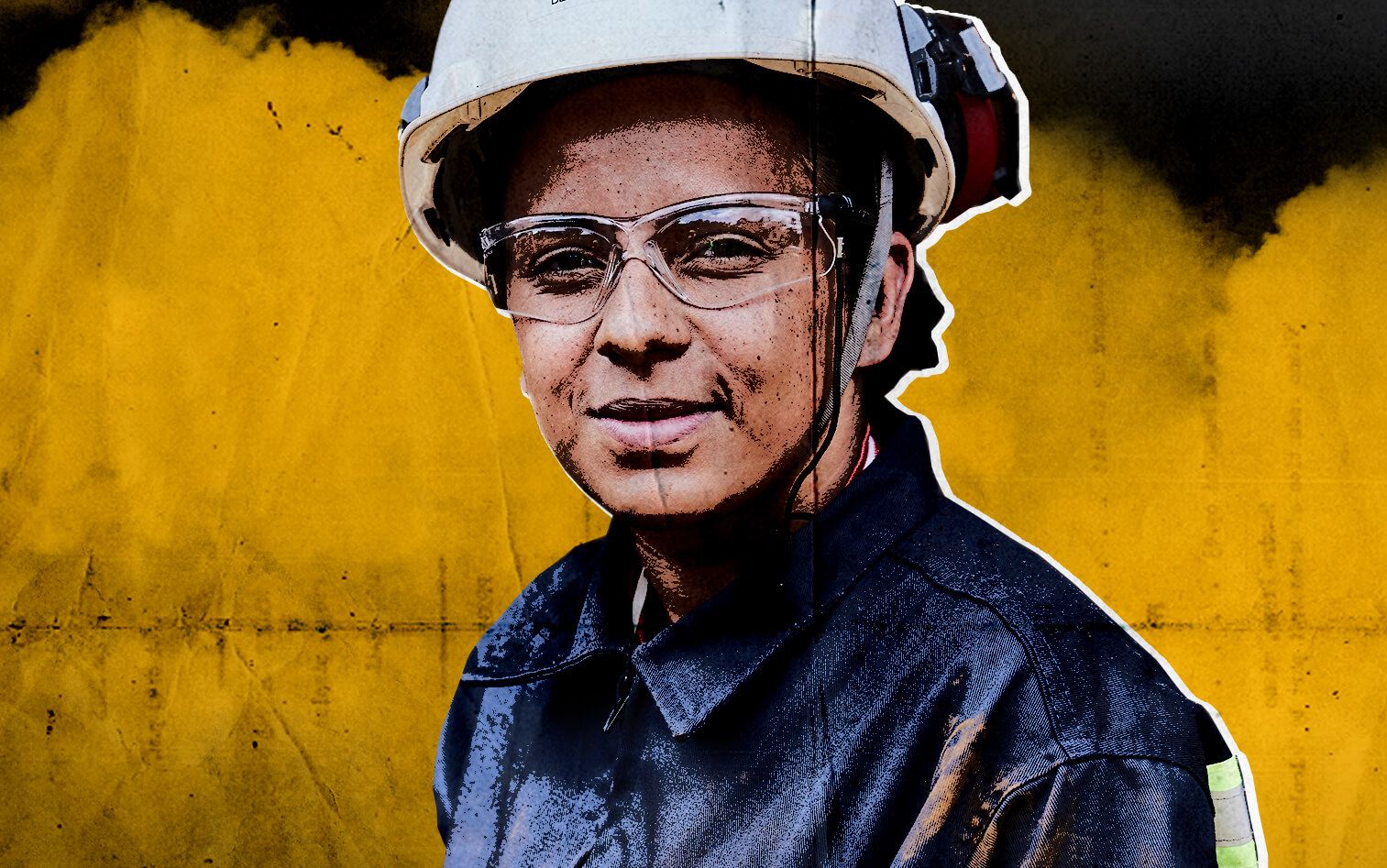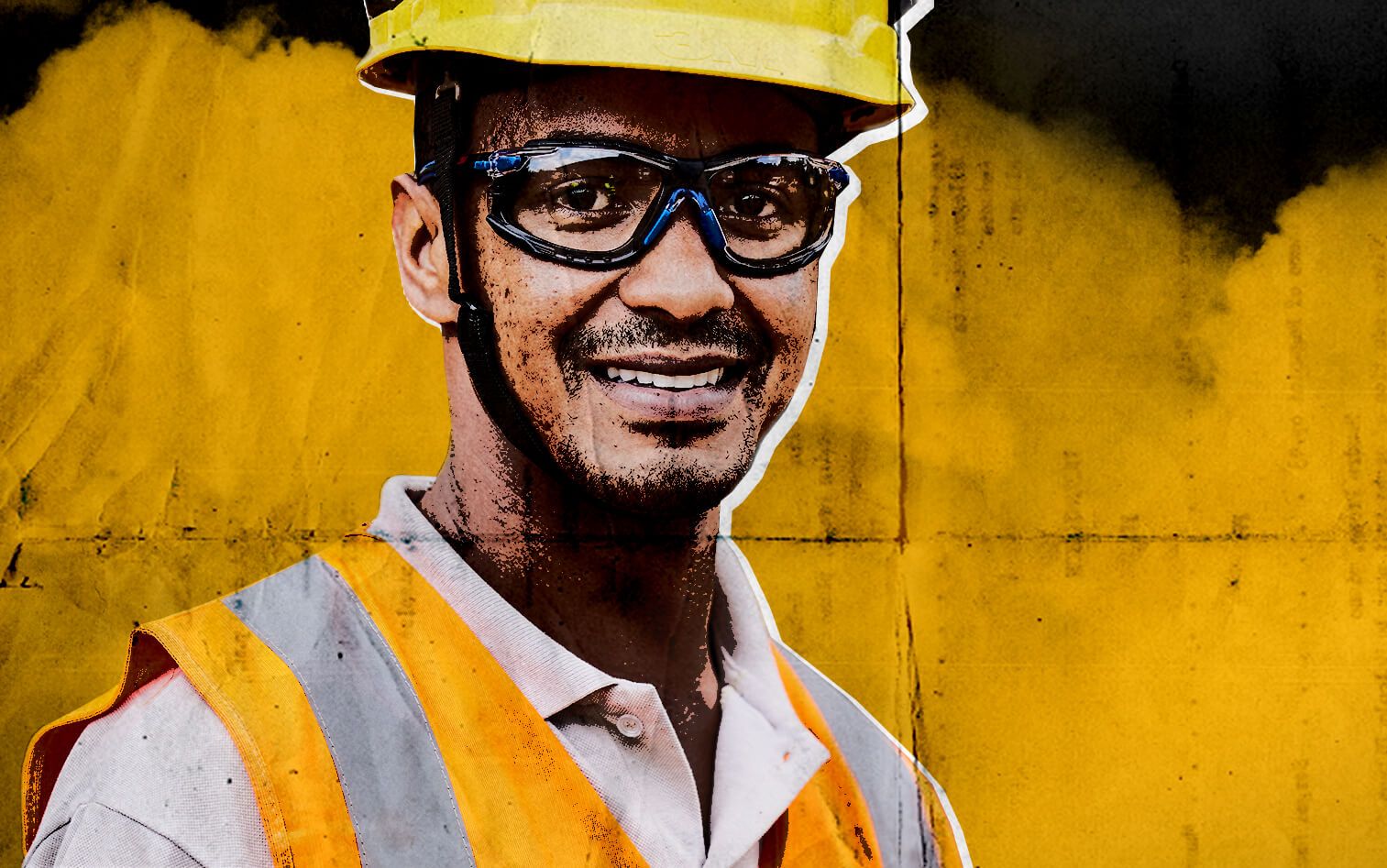

Sign In
Welcome! Sign In to personalize your Cat.com experience
If you already have an existing account with another Cat App, you can use the same account to sign in here
Register Now
One Account. All of Cat.
Your Caterpillar account is the single account you use to log in to select services and applications we offer. Shop for parts and machines online, manage your fleet, go mobile, and more.
Account Information
Site Settings
Security
A Construction Safety Roadmap for Small Business
Many small contractors do it all: Run a business. Operate machines. Provide for a family. Build the community. Sound familiar? Putting in long hours and taking risks — that’s how you got to where you are today. But what if that's jeopardizing everything you’ve worked so hard to build? Here's a way to protect yourself, your team and your profits.
Risk-Takers by Nature
Mitch Cowart understands firsthand the amount of effort small contractors put into their businesses every day. Today, Cowart is a safety expert for Caterpillar who focuses on technology-enabled solutions. But early in his career, he spent seven years working for his father-in-law’s excavation business, mostly building swimming pools.
The days were long. Productivity and profitability, not construction safety, were top priorities. And risk-taking was just part of the job.
“Every small business owner knows you have to take risks not just to start a company but also to keep it running and growing successfully,” Cowart says. “There’s financial risk, contractual risk, physical risk. Every time you bid on a job and sign on the dotted line, you’re taking a chance.”
Always Hustling, Rarely Resting
Since his days on the jobsite, Cowart’s done a lot of research into the science of human attention, perception and situational awareness — critical attributes for those working around or operating heavy equipment. What he’s learned is that human beings struggle to maintain all three, especially as we get bored or tired.
“Paying attention over the course of an eight- or 12-hour shift, day after day, is tough,” Cowart says. “Our brains aren’t wired for that. But that’s what a lot of small business owners are asking themselves or their crews to do.”
After all, the pressure’s on to complete jobs on time and budget, despite bad weather, material delays, operator shortages and equipment repairs. On top of that, many small contractors juggle working IN the business (running equipment and managing projects) with working ON the business (accounting, HR, marketing and other tasks).
“None of that leaves much time for sleep, for relaxing, for taking care of yourself,” Cowart says. “And that can lead to poor decision-making.”
The Costs — Human and Financial — Are High
Behind the controls of even the smallest machine, operator fatigue and poor decision-making can have serious, sometimes fatal, consequences.
“Does your kid or grandkid work on site with you? Your spouse? Your best friend?” Cowart asks. “If you’re tired or distracted, you could hit someone you love. You could hurt them or kill them. That’s real. You don’t want it to happen to you.”
Beyond the human cost of construction injuries, there are financial ramifications, too. Damage to equipment or property. Lost production time. Fines. Even reputational harm. With profit margins razor-thin, those aren’t expenses most small businesses have room to absorb.
Plus, based on what’s happening in other parts of the world, Cowart believes safety regulations are coming to the U.S. construction industry sooner rather than later.
“Countries like Australia and South Africa are leading the way in construction safety,” he says. “The U.S. is going to follow. We may be a few years behind, but it’s inevitable. We live in a regulated world.”
Even now, many contractors are discovering they must prove their safety credentials to win new work.
“I’ve talked to a lot of small customers who have told me that safety is absolutely a consideration of the people awarding bids,” Cowart says. “Safety can be a differentiator for your business.”
"If you’re tired or distracted, you could hit someone you love.
You could hurt or kill them. That’s real.
You don’t want it to happen to you.”
- Mitch Cowart, Senior Sales & Marketing Strategy Consultant, Caterpillar
Technology Steps In When People Make Mistakes
Construction safety technology can help counteract operator fatigue, distraction and error so you can run a safer, more productive operation.
Explore Cat® Technology
Technology Is Your Safety Net
So how does a small contractor — one pressed for time and money — add construction safety to an already long list of priorities? While large firms often have dedicated teams and budgets focused on how to prevent construction accidents, few small businesses have that luxury.
The answer, Cowart believes, lies with technology.
“Technology can be your support system, your guardian angel,” he says. “Human beings make mistakes. They get tired. They get distracted. Technology can serve as a safety net when someone makes an error.”
It doesn’t have to be complicated or expensive. In fact, Cowart encourages equipment owners to start by simply taking advantage of the safety features built into today’s machines — which require no additional financial investment.
Rearview or backup cameras, for example, are commonplace. E-fence, which comes standard on many Cat® excavators, automatically stops machine movement if the operator gets too close to power lines, fiber-optic cables, traffic or other obstacles. Both solutions can help prevent damage to people and property.
Small Upgrades, Big Impact
Next, Cowart recommends adding some simple, affordable safety upgrades to existing equipment. The most basic is a seat belt monitoring system, which reminds operators to buckle up when they enter the cab — and just as important, stay buckled in all shift.
“A lot of operators don’t think they need to wear a seat belt because the machine’s not going very fast,” Cowart says. “But rollovers happen and they can be deadly at any speed.”
In fact, looking at data from more than 50 rollover accidents, the U.S. Occupational Safety and Health Administration found zero fatalities only when operators wore seat belts in cabs protected by Rollover Protective Structures (ROPS).
Smart camera systems are another easy add-on that can help prevent construction injuries by reducing blind spots and improving operator awareness. Some even include personnel detection technology that sounds an alarm in the cab when a person enters the work area behind the machine.
Advanced Tech with Small Business Applications
Depending on the type of work you do, more advanced safety technologies may be relevant for your business.
One example is the Driver Safety System (DSS). Originally developed for mining, this in-cab detection technology is now available on Cat construction machines. It monitors an operator’s head and eyes for signs of fatigue or distraction. If DSS senses the operator is falling asleep or looking away too much, the seat vibrates and an alarm goes off.
“If your work has the operator backing up a lot, changing direction a lot, DSS probably isn’t necessary,” Cowart says. “But it might make sense in situations where operators are hauling loads for half a mile or more — really any job where they could suffer a lapse in attention."
Remote control technology may be applicable for small contractors as well — particularly Cat Command line-of-sight consoles. These portable, lightweight units don’t require any special infrastructure, making them ideal for short-term use or emergency tasks. Under normal circumstances, operators remain in the cab as usual. In dangerous situations, they leave the cab and use the console to control the machine from a safe distance.
“Is there a chance the machine could roll over on steep slopes? Do you work close to the edge of ponds or lakes where the earth could give way? Could machines get caught in an avalanche or landslide?” Cowart asks. “Line-of-sight remote technology is ideal when there are hazardous conditions involved.”
There are more safety solutions on the horizon, too, including collision mitigation technology.
“Some of the technologies that are on your car are coming soon to Cat equipment,” Cowart says. “But they have to be much more sophisticated because the construction jobsite is much more complex. The technology needs to know when it’s appropriate to intervene, and that involves very advanced AI.”
Small Machines Go Remote
Lightweight, cost-effective autonomous equipment isn’t science fiction. This demo Cat compact track loader operates both via remote control and semi-autonomously.
Take a Safety Lesson from the Rock-and-Roll Stage
When he talks about safety with small contractors, Cowart likes to tell the story of a rock band popular in the 1980s.
Maybe you’ve heard it. This band, known for its fiery pyrotechnics and massive stage shows, used to include a rider in every contract: They wanted M&Ms backstage, but the brown candies had to be removed. Most people assumed it was just an outrageous demand made by privileged rock stars. In reality, it was about safety.
If band members saw brown M&Ms backstage, it was a warning sign that the stagehands hadn’t paid attention to every detail of the written contract. And if they missed that, what else had they missed that might affect the health and safety of the band, the crew and the audience?
Construction injuries or accidents could be signs that your operation is missing something else, too.
“If you’re injuring people on the job, what else do you need to pay attention to?” Cowart asks. “How’s your quality? How’s your productivity? Are you wasting fuel? Safety is an indicator for the rest of your business.”

Mitch Cowart
Senior Sales & Marketing Strategy Consultant
Mitch Cowart has worked with Caterpillar for 10 years. He is the Senior Sales & Marketing Strategy Consultant for the Safety Technology Team, which is a part of Caterpillar’s Automation & Autonomy group. Mitch has a master’s degree in Positive Organizational Development and a BBA from Baylor University. Mitch works with a team of safety vigilantes who are passionately working to help Caterpillar customers create work zones where people are safe both physically and psychologically, that supplement human factors, mitigate risk and generate data to inform continuous improvement and drive behavior change. His Caterpillar team has decades of experience supporting leaders who aspire to excellence in their safety practice. New Mexico’s Sandia Mountains are Mitch’s home, where he enjoys backcountry snowboarding and mountain biking.


